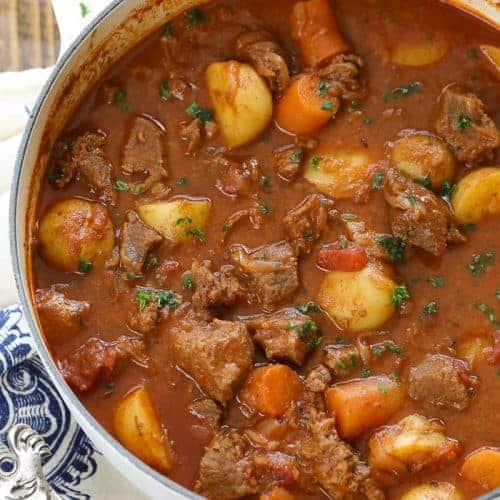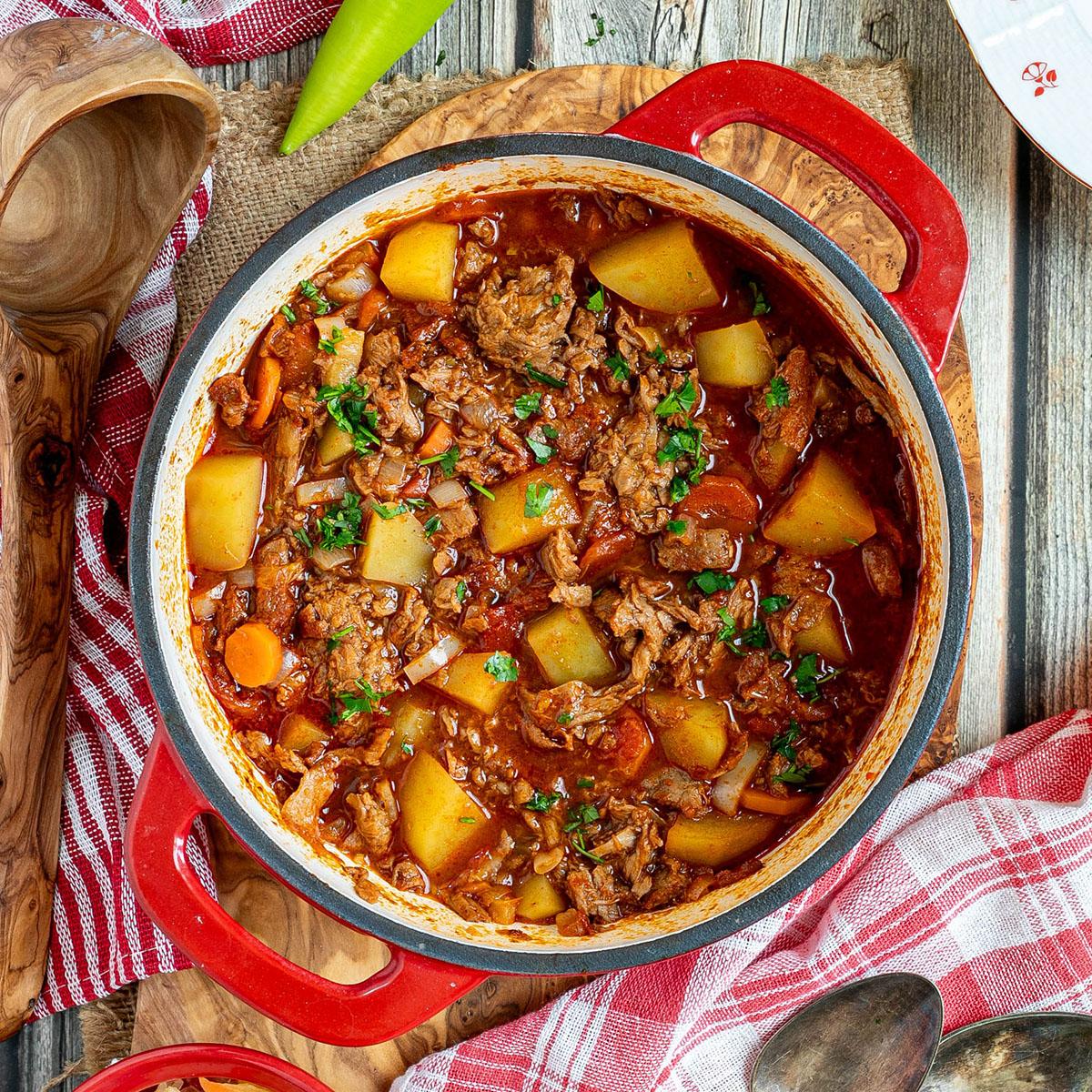In a world that constantly shifts, where culinary trends rise and fall like the tides, there exists a dish that remains steadfast — hungarian goulash stew. This hearty and aromatic creation elegantly bridges the gap between tradition and comfort, encapsulating the essence of home-cooked meals across generations. With its rich history rooted in the pastoral landscapes of Hungary, goulash tells a story of sustenance and warmth, inviting us to savor the flavors of a bygone era while basking in its unapologetic simplicity. As we delve into the hearty depths of this iconic stew, we will explore the vibrant ingredients, regional variations, and the cultural importance that makes Hungarian goulash not just a meal, but a beloved ritual of connection and nostalgia.
Exploring the Rich Heritage of Hungarian Goulash
Hungarian goulash is a dish steeped in history, symbolizing the rich cultural tapestry of Hungary itself. Traditionally made by simmering chunks of beef with vegetables, it draws on the country’s age-old culinary practices, which prioritizes fresh, locally sourced ingredients. The story of goulash can be traced back to the 9th century when hungarian herdsmen would prepare it over an open fire, creating a hearty meal that would sustain them during long days of tending their flocks. As it evolved over centuries, leading to regional variations, goulash became not just a favorite among locals but also a beloved dish internationally. Key ingredients that contribute to its distinctive taste include:
- Paprika: The cornerstone spice that provides depth and color.
- Onions: A flavor base that enhances the stew’s savory notes.
- Carrots and Potatoes: These vegetables add texture and heartiness.
- Bay Leaves: For an aromatic, earthy finish.
The beauty of goulash lies in its versatility, allowing countless adaptations depending on personal or regional preferences. Whether served as a thick stew or a soupy variant, each bowl is a reflection of tradition and home-cooked warmth. In Hungarian families, goulash is often a staple at gatherings, where the communal enjoyment of food fosters bonds and cherished memories. Below is a brief comparison of some popular variations:
| Type | Main Ingredients | Texture |
|---|---|---|
| Traditional Goulash | Beef, Potatoes, Paprika | Thick Stew |
| Pork Goulash | Pork, Bell Peppers | Savory Soup |
| Vegetarian Goulash | Beans, Seasonal Vegetables | Hearty Stew |

Essential Ingredients for an Authentic Goulash Experience
To truly embrace the essence of Hungarian goulash, a few key ingredients are indispensable. At the heart of this rich stew lies Hungarian paprika, renowned for its vibrant color and distinct flavor.This spice not only adds depth but also provides a warm,earthy warmth that sets the foundation for the dish. Complementing this are onions, which should be caramelized to perfection, creating a sweet yet savory base. The addition of tender beef, traditionally chuck or shank, ensures that every bite is hearty and satisfying. Alongside these, fresh tomatoes and bell peppers bring a burst of freshness that elevates the overall taste profile, making each mouthful a delightful journey of flavors.
To enhance the authenticity further, consider incorporating herbs such as caraway seeds and a dash of bay leaf for aromatic complexity. Each element melds harmoniously, creating a unique balance that defines the dish. Serve your goulash with a side of picked vegetables or warm bread to soak up the rich sauce. The table below highlights complementary side dishes that can transform your goulash into a complete culinary experience:
| Side dish | description |
|---|---|
| Csipetke | Small, egg-based dumplings that are perfect for adding texture. |
| Pilaf Rice | Fluffy rice cooked with spices to complement the stew. |
| Pickled cucumbers | Adds a refreshing crunch and cuts through the richness. |
| Crusty Bread | Ideal for dipping and soaking up the tasty sauce. |

Crafting the Perfect balance: Techniques for Flavorful Stew
To create a truly sumptuous Hungarian goulash, it’s all about layering flavors. Start with the right protein; beef chuck is ideal due to its rich flavor and tenderness when cooked slowly. use a generous amount of onions as the base of your stew, allowing them to caramelize to impart sweetness. incorporate vibrant paprika, the hallmark spice of Hungarian cuisine, which not only gives the stew its signature color but also its smoky depth. Remember to sauté your spices—like caraway seeds or bay leaves—before adding liquids, unlocking their essential oils and enhancing the overall flavor profile.
Don’t overlook the importance of balancing acidity and sweetness for a harmonious taste. Adding a splash of red wine or vinegar can brighten the dish and cut through the richness, while a hint of brown sugar or carrots can round out the flavors with natural sweetness. As your stew simmers, taste frequently and adjust seasonings as needed, making sure to incorporate a touch of salt and freshly ground pepper. For a full experience, serve your goulash with hearty accompaniments like knödel (dumplings) or crusty bread, which will soak up the delicious sauce, marrying all the elements of this classic comfort dish.

Serving Suggestions and Pairings to Elevate Your Goulash
To truly appreciate the rich flavors of Hungarian goulash stew, consider serving it with traditional accompaniments that enhance its hearty essence. A platter of rustic bread is a classic choice, inviting diners to soak up every delicious drop of the stew. Additionally, a side of pickles or pickled vegetables can add a bright, tangy contrast, balancing the deep, savory flavors of the goulash. For those seeking a heartier experience, consider pairing it with egg noodles or dumplings, which absorb the sauce beautifully and add a comforting texture.
Drinks can also play a pivotal role in complementing your goulash meal. A glass of full-bodied red wine, such as a *Cabernet Sauvignon or Merlot, can enhance the overall dining experience, with their tannins beautifully balancing the spices within the stew. Alternatively, for a more traditional touch, serve it alongside a refreshing Hungarian Furmint wine or a crisp, cold Lager beer. If you prefer a non-alcoholic option, a tangy homemade lemonade or a sparkling apple cider can provide a delightful contrast to the rich stew.
Wrapping Up
As we conclude our journey through the heartwarming world of Hungarian goulash stew, it becomes clear that this dish is more than just a recipe; it is a testament to the rich tapestry of tradition, culture, and communal warmth. each spoonful tells a story—of families gathering around the table, of generations passing down techniques and secrets, and of the comfort found in familiar flavors.
Whether you choose to prepare a classic rendition or infuse your own modern twist, embracing the spirit of goulash allows us to savor not just the food, but the connections it fosters. So, as you add those final touches and serve this culinary masterpiece, remember that you are not just enjoying a meal; you are partaking in a time-honored tradition that transcends borders and generations. May every bowl you share nourish not only the body but also the soul, reminding us that in every bite, there is a slice of history to savor.